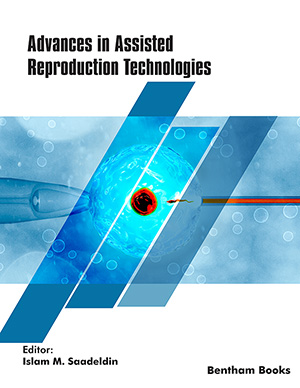Abstract
Background: Food additives act as preventive measures and promote a healthy immune response against pathogenic diseases. There are several functional food additives with antiviral potential that are part of our daily food supplements, which can be exploited to improve the immunity of the human being during the pandemic of COVID-19.
Scope and Approach: For this study, an extensive database search using the scientific databases and Google Scholar, as well as commercial search engines, such as Google and Google Patent, was conducted to explore commercial and patentable applications.
Key Finding: Food additives, such as Phyllanthus emblica, Long pepper, Cinnamon, Turmeric, Cardamom, Ginger, Garlic, Holy Basil, and Liquorice, are used in traditional cultures as preventive treatments. The phytocompounds extracted from these food additives are immune modulators against various pathogenic inflammations. Enhancing the immune response and boosting health are the benefits of these food additives.
Conclusion: The research literature and reputable sources online confirm that functional food additives in a regular diet may help cure COVID-19 disease. It is necessary to conduct scientific research to determine the effectiveness of food additives.
Future Direction: The majority of diseases are caused by metabolic disorders. It is clear that diet plays a major role in controlling the inflammation associated with diseases and metabolic disorders. There is still a lack of phytochemical screening of compounds in food additives and their interaction with metabolism. This effort will help the science community to think outside of the box of medicine.
Keywords: COVID-19, functional food additives, immune response, SARS-CoV-2, pathogenic diseases, phytocompounds.
[http://dx.doi.org/10.1038/s41477-020-0691-6] [PMID: 32572213]
[http://dx.doi.org/10.1038/s41577-019-0194-8] [PMID: 31350531]
[http://dx.doi.org/10.1016/j.jiph.2020.08.014] [PMID: 32948484]
[http://dx.doi.org/10.1038/s41579-021-00542-7] [PMID: 33824495]
[http://dx.doi.org/10.1016/S1473-3099(20)30434-5] [PMID: 32526193]
[http://dx.doi.org/10.1016/j.heliyon.2021.e06350] [PMID: 33655086]
[http://dx.doi.org/10.1039/D1SC01203G] [PMID: 34123321]
[http://dx.doi.org/10.1002/ptr.6770] [PMID: 32468635]
[http://dx.doi.org/10.1007/s13197-013-1247-9] [PMID: 25190822]
[http://dx.doi.org/10.1007/s11130-020-00861-9] [PMID: 33037564]
[http://dx.doi.org/10.1016/j.jff.2020.104149] [PMID: 32837538]
[http://dx.doi.org/10.1080/07391102.2021.1873190] [PMID: 33491580]
[http://dx.doi.org/10.1016/j.heliyon.2021.e06285] [PMID: 33615017]
[http://dx.doi.org/10.1016/j.heliyon.2021.e06538] [PMID: 33748511]
[http://dx.doi.org/10.1007/978-0-387-09550-9_7]
[http://dx.doi.org/10.1007/s11010-021-04084-7] [PMID: 33587232]
[http://dx.doi.org/10.1186/s12575-020-00141-5] [PMID: 33526007]
[http://dx.doi.org/10.1002/fsn3.1719] [PMID: 32837716]
[http://dx.doi.org/10.1017/S1368980020005297] [PMID: 33357253]
[PMID: 30550651]
[http://dx.doi.org/10.1038/s41586-020-2008-3] [PMID: 32015508]
[http://dx.doi.org/10.1164/rccm.200308-1107OC] [PMID: 14512270]
[http://dx.doi.org/10.1002/jcp.30076] [PMID: 33022076]
[http://dx.doi.org/10.1016/j.cell.2021.01.007] [PMID: 33497610]
[http://dx.doi.org/10.1038/s12276-021-00602-1] [PMID: 33953325]
[http://dx.doi.org/10.1016/j.jaim.2020.08.003] [PMID: 32837101]
[http://dx.doi.org/10.1038/s41586-020-2901-9] [PMID: 33116299]
[http://dx.doi.org/10.3390/nu12041193] [PMID: 32344708]
[http://dx.doi.org/10.1016/j.molmed.2019.10.002] [PMID: 31699497]
[http://dx.doi.org/10.1038/s41392-020-0191-1] [PMID: 32467561]
[http://dx.doi.org/10.1038/s41467-021-21336-8] [PMID: 33589636]
[http://dx.doi.org/10.1016/S0140-6736(21)00782-0] [PMID: 33844964]
[http://dx.doi.org/10.1001/jamainternmed.2021.0366] [PMID: 33625463]
[http://dx.doi.org/10.1056/NEJMoa2034545] [PMID: 33369366]
[http://dx.doi.org/10.1016/S0140-6736(21)00575-4] [PMID: 33743221]
[http://dx.doi.org/10.1016/S0140-6736(21)00675-9] [PMID: 33844963]
[http://dx.doi.org/10.1016/j.heliyon.2021.e05957] [PMID: 33462562]
[http://dx.doi.org/10.3390/nu12092633] [PMID: 32872374]
[http://dx.doi.org/10.2202/1553-3840.1441]
[http://dx.doi.org/10.1016/S0140-6736(20)31143-0] [PMID: 32422123]
[http://dx.doi.org/10.1038/s41418-020-0530-3] [PMID: 32205856]
[http://dx.doi.org/10.1186/s12937-020-00643-8] [PMID: 33208167]
[http://dx.doi.org/10.1155/2015/401630] [PMID: 25961060]
[http://dx.doi.org/10.1186/1475-2875-11-268] [PMID: 22873687]
[http://dx.doi.org/10.1093/jn/131.3.1067S] [PMID: 11238818]
[http://dx.doi.org/10.3390/molecules24091809] [PMID: 31083328]
[http://dx.doi.org/10.2174/1573401312666160608121954]
[http://dx.doi.org/10.1016/j.ejphar.2020.173643] [PMID: 33065092]
[http://dx.doi.org/10.1039/C4OB01196A] [PMID: 25268491]
[http://dx.doi.org/10.1002/ptr.3368] [PMID: 21213355]
[http://dx.doi.org/10.1016/j.compbiomed.2021.104683] [PMID: 34329860]
[http://dx.doi.org/10.1155/2011/146808] [PMID: 21076542]
[http://dx.doi.org/10.1007/s11655-014-1984-2] [PMID: 25491539]
[http://dx.doi.org/10.1016/j.lfs.2021.119201] [PMID: 33607159]
[http://dx.doi.org/10.1371/journal.pone.0057285] [PMID: 23437361]
[http://dx.doi.org/10.1371/journal.pone.0134982] [PMID: 26241041]
[http://dx.doi.org/10.1016/S0140-6736(03)13615-X] [PMID: 12814717]
[http://dx.doi.org/10.1016/j.phymed.2006.11.005] [PMID: 17140783]
[http://dx.doi.org/10.3389/fpls.2021.589783] [PMID: 33719281]
[http://dx.doi.org/10.1016/j.biopha.2021.111356] [PMID: 33561649]
[http://dx.doi.org/10.1021/jm070295s] [PMID: 17663539]
[http://dx.doi.org/10.1371/journal.pone.0070225] [PMID: 24058438]
[http://dx.doi.org/10.1016/j.jff.2017.12.017]
[http://dx.doi.org/10.1016/j.pdpdt.2021.102284] [PMID: 33836277]
[http://dx.doi.org/10.1016/j.niox.2020.06.002] [PMID: 32562746]
[http://dx.doi.org/10.1089/jmf.2009.1131] [PMID: 20210607]
[http://dx.doi.org/10.1017/S0007114511006283] [PMID: 22182368]
[http://dx.doi.org/10.2174/1876142911002020166] [PMID: 20653562]
[http://dx.doi.org/10.1089/1079990041689665] [PMID: 15320958]
[http://dx.doi.org/10.1038/s41598-018-30522-6] [PMID: 29311619]
[http://dx.doi.org/10.1016/j.jep.2012.10.043] [PMID: 23123794]
[http://dx.doi.org/10.1016/j.antiviral.2007.03.003] [PMID: 17428553]
[http://dx.doi.org/10.23869/bphjbr.25.2.20207]
[http://dx.doi.org/10.1271/bbb.70434] [PMID: 18256479]
[http://dx.doi.org/10.3390/foods8070246] [PMID: 31284512]
[http://dx.doi.org/10.1002/cyto.10133] [PMID: 12210145]
[http://dx.doi.org/10.1016/j.jep.2011.05.012] [PMID: 21619917]
[http://dx.doi.org/10.1016/S0378-8741(01)00373-7] [PMID: 11891082]
[PMID: 32851919]
[http://dx.doi.org/10.1021/jm0493008] [PMID: 15715493]
[http://dx.doi.org/10.1016/S0166-3542(03)00030-5] [PMID: 12834859]
[http://dx.doi.org/10.1016/j.antiviral.2008.01.160] [PMID: 18423902]
[http://dx.doi.org/10.1128/AAC.41.3.551] [PMID: 9055991]
[http://dx.doi.org/10.1111/are.14544]
[http://dx.doi.org/10.1177/2515690X21996662]
[http://dx.doi.org/10.1016/j.cyto.2021.155496] [PMID: 33773396]
[http://dx.doi.org/10.3109/08923979709038536] [PMID: 9049662]
[http://dx.doi.org/10.1080/08923970500242244] [PMID: 16237958]
[http://dx.doi.org/10.1002/ptr.6738] [PMID: 32430996]
[PMID: 33373071]
[http://dx.doi.org/10.1007/s00203-020-02163-9] [PMID: 33459817]
[http://dx.doi.org/10.1002/jcp.28103] [PMID: 30623441]
[http://dx.doi.org/10.1016/j.jff.2021.104503] [PMID: 33897833]
[http://dx.doi.org/10.1177/1470320314545777] [PMID: 25143335]
[http://dx.doi.org/10.35219/foodtechnology.2020.2.12]
[http://dx.doi.org/10.1016/S0378-8741(01)00421-4] [PMID: 12020921]
[http://dx.doi.org/10.1007/s11130-006-0001-0] [PMID: 16688481]
[http://dx.doi.org/10.1016/j.biopha.2017.07.065] [PMID: 28747010]
[http://dx.doi.org/10.1016/j.anaerobe.2019.102089] [PMID: 31430531]
[http://dx.doi.org/10.1007/s10753-016-0394-3] [PMID: 27351430]
[http://dx.doi.org/10.1042/CS20160218] [PMID: 27129189]
[http://dx.doi.org/10.4172/2167-7956.1000154]
[http://dx.doi.org/10.1016/j.foodchem.2010.02.060]
[http://dx.doi.org/10.1016/j.jep.2005.04.015] [PMID: 15978760]
[http://dx.doi.org/10.1038/281689a0] [PMID: 233133]
[http://dx.doi.org/10.3390/v13040609] [PMID: 33918301]
[http://dx.doi.org/10.1016/j.apsb.2015.05.005] [PMID: 26579460]
[http://dx.doi.org/10.1002/jmv.25707] [PMID: 32052466]
[http://dx.doi.org/10.1016/j.ijantimicag.2020.105995] [PMID: 32335281]
[http://dx.doi.org/10.1186/s13063-020-04765-6] [PMID: 33036662]
[http://dx.doi.org/10.1002/ptr.7019] [PMID: 33511704]
[http://dx.doi.org/10.1055/s-0029-1234649]
[http://dx.doi.org/10.1016/j.jviromet.2021.114070] [PMID: 33497729]
[http://dx.doi.org/10.1111/j.1541-4337.2011.00156.x]
[http://dx.doi.org/10.1080/10408390601062054] [PMID: 17987447]
[http://dx.doi.org/10.1186/s12906-018-2238-1] [PMID: 29866088]
[http://dx.doi.org/10.1186/s12906-016-1147-4] [PMID: 27245453]
[http://dx.doi.org/10.1080/07315724.2006.10719525] [PMID: 16582031]
[http://dx.doi.org/10.1093/jn/138.5.833] [PMID: 18424588]
[http://dx.doi.org/10.1186/1472-6882-13-275] [PMID: 24148965]
[http://dx.doi.org/10.3390/molecules15053338] [PMID: 20657484]
[http://dx.doi.org/10.1158/1940-6207.CAPR-14-0359] [PMID: 25712056]


























